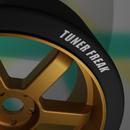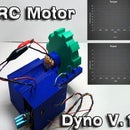Introduction: Make Your Own Plastic
Many of us use plastic in our projects, but did you know you can melt down and reuse much of the plastic found in your house? In this instructable you'll see how to recycle plastic to be reused for whatever you want.
Step 1: What Type of Plastic Can Be Reused?
For this method we will be reusing high density polyethylene (HDPE) plastic. You can identify this plastic by the recycling symbol on the bottom of most plastic containers. HDPE will be identified by a small "2" in the center of the recycling symbol, and will sometimes even be accompanied by "HDPE" written next to the symbol.
When compared to ABS plastic:
HDPE:
- density - .958g/cc
- tensile yield strength - 20.6MPa
- melting point - 129 C
ABS:
- density - 1.05g/cc
- tensile yield strength - 41.5MPa
- melting point - 220 C
While HDPE is not as strong as more widely used polymers such as ABS, it is good for low stress applications such as project enclosures, lightweight mounting solutions, and more. And the best part, it's free!
Step 2: Materials and Tools
To start this project you'll need:
Materials:
- HDPE plastic in the form of containers and/or plastic bags
- Baking pan
- Wax Paper
- Non stick cooking spray
Tools:
- Scissors
- Oven or toaster oven
- Gloves (preferably welding gloves or similar heat resistant gloves)
Step 3: Preparations
If you decide to use plastic containers such as milk jugs you'll need to cut up the plastic into smaller pieces. Using your scissors cut the plastic into nickel sized pieces. If you use plastic bags it helps to tie them in a knot. Plastic bags tend to shrink in peculiar ways when they melt, knotting them makes them easier to work with. Once you've cut up your plastic into small pieces preheat your oven or toaster oven to 350 degrees Fahrenheit. Make sure you do this in a well ventilated area! While the plastic shouldn't release an excess of fumes if done at the correct temperature, any fumes it does release will be nasty and should be avoided.
Next you'll want to grab what ever you decide to use to melt your plastic in. An old cooking sheet or pan can be used. Line the pan with a sheet of wax paper and spray a light coat of non stick spray or similar lubricant across the sheet.
Another option, if you've built the furnace shown in my last instructable, you can cast aluminum molds for melting down your plastic.
Step 4: Time to Melt!
Place your plastic into your pan or mold and place in the oven. Cooking should take between 30 minutes and an hour depending on your oven. Keep an eye open for signs of burning and adjust the heat as necessary. The plastic will go soft and malleable as it melts. Once all of the plastic is melted you'll want to grab your pan or mold out of the oven (make sure you have your gloves on!) and check for gaps and voids in the plastic. If you want cleaner edges on your plastic, fold the edges of the plastic over on itself. Once you're happy with your plastic, throw it back in the oven for another 10-20 minutes to melt down and make the part solid.
Once your plastic is done you'll need a way to keep pressure on top of the plastic while it cools. Otherwise the plastic will try to buckle and warp as it cools. This can be done with a couple of pieces of wood and either a couple of clamps or a heavy weight.
Step 5: Make Something!
Once your plastic is cooled it can be used for whatever you can think of! You can trim it and make plastic stock for later use, or cut and machine it into anything you come up with. I've found that a small jig saw works well for cutting and 80-180 grit sand paper for shaping.
Go and use your plastic for your next project and thanks for checking out my instructable!













